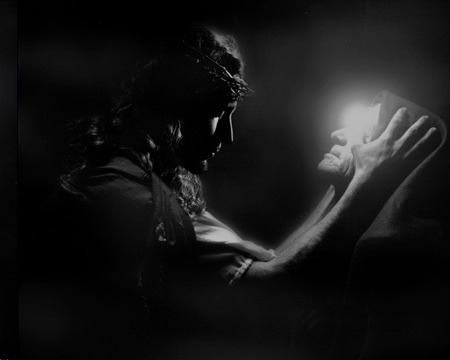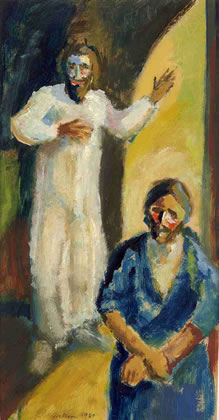This homily was delivered on 31 March 2014 on John 4:43-54.![miracle39[1]](https://pinsoflight.net/wp-content/uploads/2014/03/miracle391.jpg)
While this Gospel story transpires after our Lord’s encounter with the Samaritan woman, I can’t help but read this in the context of yesterday’s gospel on the healing of the blind man.
 This reflection is on the healing of the blind man in John 9:1-41.
This reflection is on the healing of the blind man in John 9:1-41.
There is something awesome, strange, and sad about this story of our Lord’s healing of the blind man. It’s a very special miracle for a couple of reasons.
First of all, it is one of our Lord’s most astonishing healing miracle. The man had been born blind, so this was a most important moment in this one person’s life–someone who had never seen anything all his life, who probably did not even have a grasp of the concept of colors, and now for the very first time, was going to see!
 This homily was delivered on 29 March 2014 based on Luke 18:9-14.
This homily was delivered on 29 March 2014 based on Luke 18:9-14.
We’re all familiar with this short and simple parable of the Pharisee and Publican. Listening to the parable, we get the feeling that we’ve met these characters before. It’s not just because we’ve actually heard this parable many times, but also because both the Pharisee and the Publican have made their appearances in other Gospel passages–though in different guises.
There is the Parable of the Lost Son, which seems like a straightforward enough parable about God’s mercy until the understandably resentful–and also understandably self-righteous–elder brother shows up in the end, refusing to join his brother’s welcome party, and in the process, revealing the Pharisee inside him.
WASHING FEET + CLEANSING TEMPLES: Two significant actions performed by our Lord before His Passion and Death.
What can they mean for us who will be entering into the mysteries of Holy Week? Do they have something more to teach us about ourselves, our lives, our Lord?
Join us for a three-day online Holy Week retreat from Holy Thursday (April 17) to Black Saturday (April 19). All you need is about half an hour to an hour each day. Spread the word.